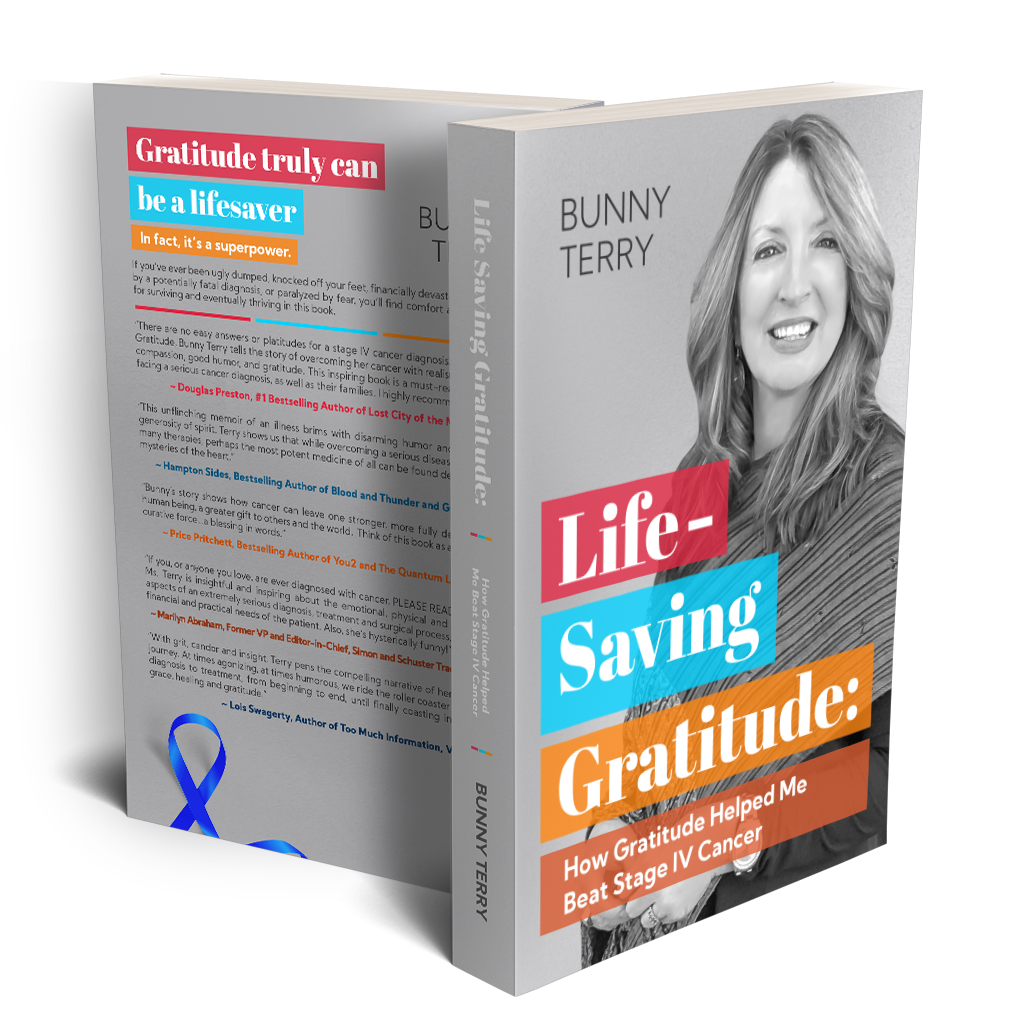About the Episode:
This is a very special episode with two very talented people. Jock and Tracy talk all things New Mexico, art, ballet and cancer survival. This episode promotes the Cancer Foundation for New Mexico’s “Healing with HeArt” initiative that will be unveiled at the 2023 Sweetheart Auction on February 11. To learn more about the Sweetheart Auction visit the links below.
Links
Sweetheart Auction Website
Tracy King’s website
Cancer Foundation for New Mexico
Bunny’s website
Buy Bunny’s book on Amazon
I Love New Mexico Instagram
I Love New Mexico Facebook
Original Music by: Kene Terry

Featuring:
Jock Soto
Bunny met Jock through her work with The Cancer Foundation for New Mexico
Jock is known for his renowned work as a principle dancer with The New York City Ballet for 24 years. He is the author of “Every Step You Take” his memoir published in 2011. He is the son of a Native American mother and a Puerto Rican father, and was born in Gallup, NM. At age 5, he began studying ballet in Phoenix, where his family lived.
He first studied at the School of American Ballet at 11 and he became the youngest principal dancer with the New York City Ballet. Jock now lives with his husband Luis in Eagles Nest, NM where he gives back to his community and enjoys a quiet, private life (away from the subway!).
Featuring:
Tracy King
“My decision to become an artist occurred at a crossroads in my life. A time when the left side of my brain was highly developed and the right side of my brain was screaming to be explored. It was a time of deep exhaustion, frustration, excitement and fear about diving into the unknown. It set into motion a move to San Miguel Del Allende, Mexico site unseen. My husband and I spent eight years abroad, redesigning our lives and living a fully creative existence. I immersed myself into my art and had the opportunity to open and run a studio/gallery “Chrysalis” at the well known Fabrica La Aurora.We have now repatriated back to the states and are living in Santa Fe, New Mexico where we are building our dream home and my new art studio. It is a place that speaks to us both and we now fully understand why it is known as the “Land of Enchantment”.”
Episode Transcript
Bunny: (00:00)
Hi there. I’m Bunny Terry, and you’re listening to the I Love New Mexico podcast. Whether you’re a native new Mexican, who’s lived here for your entire life, or you’re just considering a visit, this episode is for you. Join us as we share a lot of New Mexico’s stories, talk about all things New Mexico, and include topics like what’s magical here, where you ought to visit, what’s happening, and the things you absolutely cannot miss in the land of Enchantment. We’re excited that you’re here, and we can’t wait to show you what an amazing place New Mexico is, because let’s face it, I love New Mexico.
Bunny: (00:50)
Those of you who are, are friends of mine and perhaps fans of mine, which is a funny word to use for me, um, know that I am a stage four colon cancer survivor, and that my great passion is helping other people get to treatment and get well, which is why I serve as the board chair of the Cancer Foundation for New Mexico. We help Northern New Mexicans get the treatment that they need, and, and my special guests today are also part of that lifesaving endeavor. Um, one of them is my great friend, Jacque Soto, which you have heard before on the Lifesaving Gratitude Podcast. And the other is Tracy King, who is a Santa Fe artist, who also, uh, actually a recent resident of Santa Fe who agreed so generously to be part of this initiative. But I, the, we are calling this, this is, um, these are pieces of art that are going to be sold at the Sweetheart Auction on February 11th, the Cancer Foundation for New Mexico’s Sweetheart Auction. And somebody on our committee, um, Jodi Vavoda, who’s one of our very generous board members, said, you know, I’ve heard of this initiative where we pair patients with artists, and together they create something really special. And sometimes it’s sculptors, and sometimes it’s painters, and sometimes it’s fabric artist. And, and, and because we Santa Fe is such an art community, everybody on the committee immediately said yes. And so out of that was born this relationship between these two amazing people that we’re gonna talk to today and this gorgeous piece of art that’s gonna be sold at the sweetheart auction. But everybody, nobody wants to hear from me. So, um, first Jock, I want you to introduce yourself and, and tell us who you are. Um, you know, uh, give us all the celebrity status as well because it’s so well deserved. And then tell us why you are involved with this particular piece and this particular organization.
Jock: (03:06)
My name’s Jock Soto. Um, I was a dancer with the New York City Ballet for over 20 years, and taught in New York City for a very, very long time. Now, finally in Eagle Nest, New Mexico, my haven, my Paradise, happily with my husband. Um, I am so excited about this, uh, painting because it, uh, this, I believe was your idea Bunny, to put me and Tracy together to create this, this wonderful piece of art that, that is right behind Tracy’s head right now. But, uh, I got to spend some time with her and got to know her art and her, what she does and how powerful her work is, and the, the fact that she and I met, um, and this thing came outta, this is so special to me because the title of the piece is Kiara Scro. And, um, Tracy and I, when we first met, I said, that’s, that’s such a great title because there was a ballet that was made for me in New York City, called Kiara Sao. So the, and the other titles that we thought about were, uh, I think Tracy, you’d mentioned, um, another name of another ballet that was done for me, uh, a River of Light. So I think that we just got this connection so suddenly together that, that the colors came to, to light with everything that she was talking about. Tracy was talking about that I was talking about my life, my past, everything kind of came together. And this piece of work special in a lot of ways to me and this work, uh, is kind of very important, um, I think, and for the Cancer Society and for raising money for people that need help and all that stuff. So I think it’s kind of really special.
Bunny: (05:12)
Well, and I think it’s important for people to know, jock, that you were a patient at New Mexico Cancer Care and you’re a survivor.
Jock: (05:20)
Yes, yes. And I, I thank, I thank God every day for that. And I thank God for what you guys all did for me when I, you know, when I was going through those struggles and all that stuff. And also, you also know this bunny, but my, you know, my mother passed from cancer. My dad had cancer his whole life until he died a few years ago. And my brother is just recently going through prostate cancer. So we have to, um, we have to raise money in any way that we can to for cancer survivors. And you know, that more importantly than anyone else, Bunny, because you’re a survivor also.
Bunny: (06:03)
Well, I’m, I’m so excited that the two of you agreed to work together, and I, now I wanna hear from Tracy. I wanna hear, um, first of all, um, how it was, how you felt when you met Jock, but then when you, what I heard from another of the artists was that this, this journey and this meeting and this painting was, had, had a transformative effect on the artist. I’m curious to know if you had some of the same, I’m, I’m, I’d like to know how this worked for you, but please tell us first who you are and, um, how people can find you, because your work is amazing.
Tracy: (06:41)
Thanks. Bunny, thanks, Jock. Well, I, first of all, Tracy King. And, um, I’ve been in New Mexico for a little over three years, which honestly feels like a blink. I, um, I don’t know where the three years have gone, but, um, just a little bit of background. Uh, I was living in San Miguel, Dee Mexico for eight years, and, um, that’s the sister city of Santa Fe. And, um, our time was up in Sam, Miguel and I had been doing some collaborative projects with other artists here in Santa Fe, and my husband and I were considering whether we should go back to California or perhaps lean into New Mexico. And so we continued to fall in love with Santa Fe and make connections here. Um, he last owed me into building a house,
Bunny: (09:06)
Well, we’re looking to raise a lot of money.
Tracy: (09:09)
Um, a lot. Yeah, a lot. And she said, would you like to do something pretty unique and different and innovative? Um, we think we have a really interesting person for you to work with. Um, that may not seem likely, but we think it’s the right match. And she introduced me to Jacque, you know, virtually, um, as you know, cuz you were part of that. And I thought, oh my gosh, I’m gonna have the opportunity to work with a previous principal, New York City ballet dancer. I’m like, I’m not a celebrity, you know,
Jock: (12:11)
Smokey Bear Drive,
Tracy: (12:14)
Jock: (15:20)
I’m pretty sure you and I sat across from each other in some restaurants at some point.
Tracy: (15:24)
Bunny: (15:34)
Well, so I wanna assume for a moment that we have listeners who are like, who? Well, okay, so, um, who is this guy? So Jock, give us just a little background on you. I, you know, we know that you went early in life and that you, that, um, you first saw somebody that you started dancing when you were five years old, but you, you were a hoop dancer as well, weren’t you?
Jock: (15:59)
Yes. My mother, my grandfather was very well known on the reservation for being a famous, uh, drummer and singer. And, um, he taught my mother to hoop dance when she was a teenager. And she was, she was basically the only female hoop dancer that they had on the reservation because it was only men who did the hoop dance. And so my mom and my grandfather, he would sing on the front porch of their little shack and, and, uh, in Chinle, Arizona. And my mom would teach me how to go through the hoops and how to dance through all of that. So yeah, I started doing that at three.
Bunny: (16:40)
Oh, at three.
Jock: (16:40)
Between three and 10 is when I would do hoop dances. We’d go to the rodeos, we’d go to powwows, and, uh, my mom and I would perform side by side. So that was my introduction to dancing. And, and, and of course when I was five I saw dancing on the Ed Sullivan show, and that was it for me. That was, that was, that was when I wanted to be a ballet dancer from the get-go. And, um, that’s all I really did. Um, now I teach it, now I choreograph, now I, you know, travel around and do, do that, but ballet for me was it, that was all I ever wanted to do. And, um, it’s true. I, I went there when I was 13. I moved out of my parents’ RV and, uh, found a place to stay with four other guys. And we just struggled. And, and, uh, all we did was dance from 10 in the morning until, you know, until seven at night. And we’d do that every single day. And that was my passion. And, you know, that, that’s what, that’s what I did. I got into New York City Ballet when I was 16. George Ballantine chose me. Um, and that was my life. That, that was my life. I couldn’t see any other direction.
Bunny: (17:58)
And, and you, were you the youngest principal dancer for the New York City Ballet at the time?
Jock: (18:04)
Um, I was promoted, um, when I was 19 to a soloist. And then when I was 20, I was, uh, promoted to principal dancers. So that was, that’s the highest you can get. Yeah. Wow. And that was when I was 20, so I danced there till 2005. I mean, and then I finally retired at 40.
Bunny: (18:24)
Except, except that you’re still dancing. I mean, you you did, do you have anything coming up? That’s what I wanna know.
Jock: (18:33)
Bunny: (18:34)
Jock: (18:36)
Bunny: (19:03)
And that’s at the Hispanic Cultural Center in Albuquerque?
Jock: (19:06)
Yeah, the Hispanic Center. Yeah. Yeah. It’s, okay.
Bunny: (19:08)
Great. So you have this weekend together, you and Tracy have this weekend together. And I’m curious, Tracy, did you go home from there and start painting or were you still, I mean, how was this working in your head?
Tracy: (19:21)
Yeah, I mean, it’s, so I, uh, first of all, when I was up there, um, not only did Jacque and I have a ton of conversations, no, um, I, I took a, a lot of photographs of Jacque’s surroundings, his house that he built for his mom that they’re living in now. Um, he, you’ve probably been up to his home up there, but he has a ton of photographs from his days at the New York City Ballet and all of his acquaintances and, um, people that mentored him and his dancing and friends. And I mean, just to give you an idea, I mean, it, it was quite rich. I mean, my, the bathroom, the guest bathroom that I used has an Andy Warhol photo of Jacque. And I thought, wow, I have to take some of this in
Tracy: (20:25)
And, you know, I came back to the studio. I don’t paint, um, a single painting ever. Um, and I decided to hang three blank canvases up on my studio wall. And I basically thought one will reveal itself. So I basically bounce from canvas to canvas to canvas. But before I start painting, um, because this was a different project, it wasn’t about my personal, um, emotions or expression per se. I really wanted to do a piece that represented Jacque’s journey and heritage, his journey in life, and also his experience as a cancer patient. Um, that was our hope. So I actually engage in a meditation before I paint, and the meditation is done by Maryanne Williamson. And it is about essentially emptying your mind and putting your ego and putting your fears and putting your reservations or anything that’s a limitation in your life on the altar, whether it’s the altar of God or the altar of the universe. But it’s about emptying yourself out and creating a, a, I call it a being a vessel. So I, I made sure that I had that discipline before I started painting at all. Um, and I’ve done that ever since I started the piece, ooh, probably back beginning of November. And the piece had, um, three canvases were evolving. And I would say, Jacque, when did I finish the piece? Maybe two weeks ago.
Jock: (22:22)
Two, two weeks I came in. So in the, in the way I know it’s done is it stops talking to me. Um, Jacque and I both agreed on the piece’s name and it’s, you know, KIRO is, as you both probably know, it’s the use of contrast of light and dark and, you know, the balance of light and dark. And that’s something that in addition to Jacques, I’m super passionate about in my life. I believe that the darkness plays a important role in our lives. And essentially it’s about how do you navigate through both, you know, the shadows and the light, and how do you use the shadows in your life to shine the light even more brightly and to grow and to evolve. So I personally was hoping the piece would have an ethereal nature. Um, it would have some level of movement, clearly, because Jacque is all about dance and, you know, he was inspired by the hoop dance that his mother did. And being the first Navajo woman that performed the hoop dance, I wanted the circle, um, to be a prominent, um, element in the piece. I believe that it represents his life in a strong way. I also think that it represents anyone’s life because it’s about, you know, where you start, where you travel to, and oftentimes where you circle back to. Um, and so it has a strong symbology, I think, and hopefully for many people, um, in life. And I also made sure that in the circle, the hoop, that there was a metallic gold. Um, because I do, I, I think there’s really something so incredibly graceful about shock, not just because he was a principal ballet dancer, but also the way that, um, he inspires so many people in life, you know, through his teaching, through the work he’s doing. Um, bunny with your organization here, um, with the Cancer Institute and Foundation. And, um, I wanted the piece to read light and color and Jacques shared with me this hot, funny, you might have seen it, but his mother made this. I haven’t seen it, but wow. Wow. Oh my gosh. This is a stunning piece. I’m a little nervous holding it cause he left it here and for me to keep with the painting. But Jacque’s mom did this piece for one of Jacque’s mentors in New York, and it’s about Jacque’s life, his family’s life. And, and first of all, it’s a tremendous piece of art, but within the piece, it’s the Navajo colors, which I love. And I wanted to inform the piece, you know, the turquoise, the gold, um, the black. And I asked shock, I said, what is your favorite color? And he said, red. So that obviously is part of the Navajo, um, color story, but I also wanted to make sure that red was prominent in the piece. But in this pot there is sage. And you know, for those that don’t know, sage is about, um, a sacred blessing. And so you go into spaces or you keep it in your life to clear evil and to bless. So this was a prominent, um, piece in her life that she put in the pot and within the pot, and I’m gonna make Jacque probably cry.
Jock: (26:25)
Tracy: (26:26)
Is his mother’s story about the pop in his life. And he read some of this to me, but then he had to stop, which I understand. So there is so much soul that I tried to instill in the peace. And this pot, this beautiful piece of artwork has his mother’s essence in Jacque’s life depicted on it. The other piece that he brought down for an inspiration, um, as I was painting, was a dream catcher that his mom made. Wow. And it’s got a beautiful turquoise piece in the middle, but it’s, it’s a web of sorts that, that, uh, is meant to ca to hold your dreams. And I said to Jacque, I said, what does this mean to you? And he said, obviously, you know, dreaming big and dreams have been a big piece of my life. He said, even though a lot of people think dream catchers are important, he said, I’ve always been able to hold my own dreams. So it’s, there is so much, um, heart and soul and meaning in this piece that I believe really came from Jacque and I both, and it’s meant to be a celebration of his heritage and New Mexico, um, the southwest and the rich Native American Indian heritage we have here. And what makes, I think New Mexico so unique, so soulful, it’s, we really wanted to depict that in this piece and at the same time give the viewer, um, the opportunity to find meaning in it themselves. But most of all, being a cancer survivor, and I, I have cancer in my family too. I’ve had some pretty serious bouts with skin cancer being the sun worshiper. I’ve always been, but I believe that cancer, unfortunately, is a part of, uh, most people’s lives now mm-hmm.
Bunny: (30:10)
Well, and I wanna let people who don’t know, I mean, they’re, I, I mean, I hope we have new listeners. Um, I, you know, I talk about this so much in my life that I think everybody knows this, but the Cancer Foundation for New Mexico is a local foundation that was founded because doctors 20 years were celebrating 20 years of existence this year. And 20 years ago, a group of oncologists came to a group of philanthropists in town and said, listen, we’ve, we’ve figured something out. People are getting diagnosed and then we never see them again. And when we re when we reach out to them, it’s not because they don’t have insurance or they’re not on Medicaid or Medicare, or it’s not because they can’t cover the treat the cost of the treatment in some way. It’s because the idea of getting to Santa Fe from Taos or Raton, or Chama or Mora, is so daunting to people whose life is, is affected by like, you know, the cost of gasoline and the cost of groceries that people are making choices and saying, you know what? I gotta feed my family. I can’t afford to come back. And so 20 years ago, this group of people got together and said, we gotta fix that because you can’t get, well if you can’t get treatment at, at least that’s how it worked for Jock and for me. And so 20 years ago, this very brave group said, you know what? We gotta help northern New Mexicans get to treatment. And so, um, you know, we do mileage reimbursements. I just got this number from, um, our development director in the last five years. We have re we have reimbursed over 2.1 million miles to patients who needed to get to Santa Fe for treatment. I, it does deserve a big round of applause. Um, we provide grocery cards, um, we provide, as doc well knows free overnight stays. So you, you know, you had to be here for seven weeks, five days a week. That’s when I met you. You were in the middle of that radiation, seven weeks of radiation. And, you know, Santa Fe’s an expensive place to stay. And so this,
Jock: (32:38)
I really, really, really appreciate what, what was done for me. I w I was actually in for nine weeks.
Bunny: (32:45)
Oh, nine weeks. Holy mackerel.
Jock: (32:47)
Yeah. And, um, I mean, all I had to do was walk across the parking lot to get my treatment every single day. And, um, you know, it really, it was, it was incredible for me because as you know, as we all know, when you’re getting treatment like that, you can’t work. So I wasn’t making any money. I w my husband had to be with me five days a week, um, you know, and then we’d come home for the weekend. I mean, but it was, uh, it really meant a lot. And, and the nurses and the doc, everybody there was the sweet, they were the sweetest people I’ve ever met. And every morning I would go get my radiation and there would be one man waiting for his treatment before me. And he and I became friends, uh, during those weeks because he was going through his second round of radiation. He’d already had this, you know, years before, but then he, he got a rebound of, it was just, it was just an incredible, this man was incredible. So his last day I went to Target and I bought him a, um, a Superman shirt,
Bunny: (34:40)
Well, don’t thank me. I wanna, I think we ought to thank the people, whoever they were that started and, and, and the people that are gonna show up at the sweetheart auction and, and purchase. I mean, we do have a really lofty goal, but, but there’s a huge need in what we found out is that during the pandemic, people didn’t get screened and people had symptoms and they didn’t go to the doctor. You know, we were so fear bound, talk about light and dark. We were so fear bound at that point. So the numbers of especially young people with advanced stage cancer that we’re seeing right now, that are needing our help is, is heartbreaking. And so for the two of you to give a lot of time and a lot of energy, and a lot of love to this project is, I have to say it’s life changing, but it’s really life saving. I mean, this is the only, I mean, I’m the board chair because I feel like this is the only local charity and, and it’s very local. Every dollar stays in New Mexico. This is the only local charity where I can say that right now. I know that the work that I’m doing perhaps can save a life. So I’m, so I’m, I mean, I just can’t say I’ve say it over and over and over how grateful I am first that Jodi introduced the initiative and then that the both of you were like, you’re like, you’re waving your hands saying, we’ll do it. We’ll do it because you’re so soulful and so generous, and I can’t wait to see you at the event and give you both a hug. Yeah, yeah, us too. So we are going to, I want everybody to know that even if you’re listening to this or whether you’re watching it on YouTube, if you’re listening, we’ve got a link where you can go and look at this piece of art. Um, we are hoping, I mean, I’m hoping that I’m the winning bidder, but we are also, um, hoping that there are people with professional offices, especially where people may be treated by cancer, who might wanna purchase this as an inspiration to their patients. It just seems like the perfect, perfect change. But I, I want people to be able to find it online, take a look at the image, and, um, we’ll also provide links to you, Tracy, so that they can find you to give you a thumbs up. Does that work? Okay. So we’re, we’ve, we’re actually out of time, but thank you, thank you both so much and thank you for making time this morning to talk to people about this collaboration. Thank you.
About the Podcast
Recent Episodes
I Love New Mexico Teachers: Bunny Terry
About the Episode: Summer is coming to an end and a new school year is...
I Love New Mexico Food: Kirk Muncrief of AlbuKirky Seasonings
About the Episode: In New Mexico you know we love food AND we love spicy...
100th Episode Recap: Bunny & Johanna
About the Episode: The I Love New Mexico podcast has made it to 100...






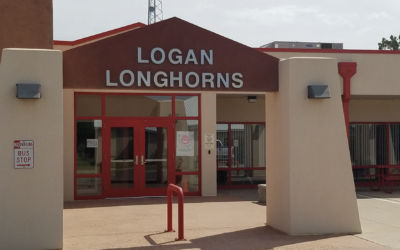
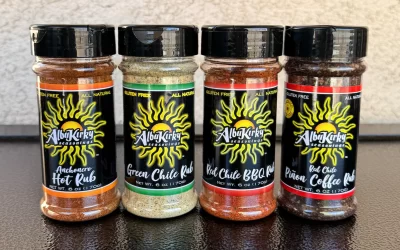
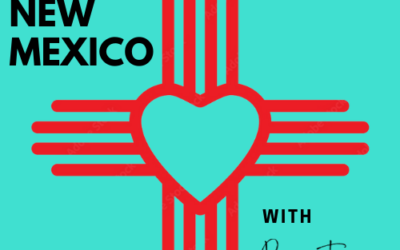
 Bunny Terry is a native New Mexican who grew up on a farm in northeastern New Mexico. Her first writing job was typing stories on index cards on her family’s Underwood, stories that were uncannily like the ones she read over and over in O Ye’ Jigs and Julips, her favorite childhood book. No one thought to save those index cards for posterity, although there is the theory sarcastically circulated by her siblings that they will certainly be worth millions someday.
Bunny Terry is a native New Mexican who grew up on a farm in northeastern New Mexico. Her first writing job was typing stories on index cards on her family’s Underwood, stories that were uncannily like the ones she read over and over in O Ye’ Jigs and Julips, her favorite childhood book. No one thought to save those index cards for posterity, although there is the theory sarcastically circulated by her siblings that they will certainly be worth millions someday. 